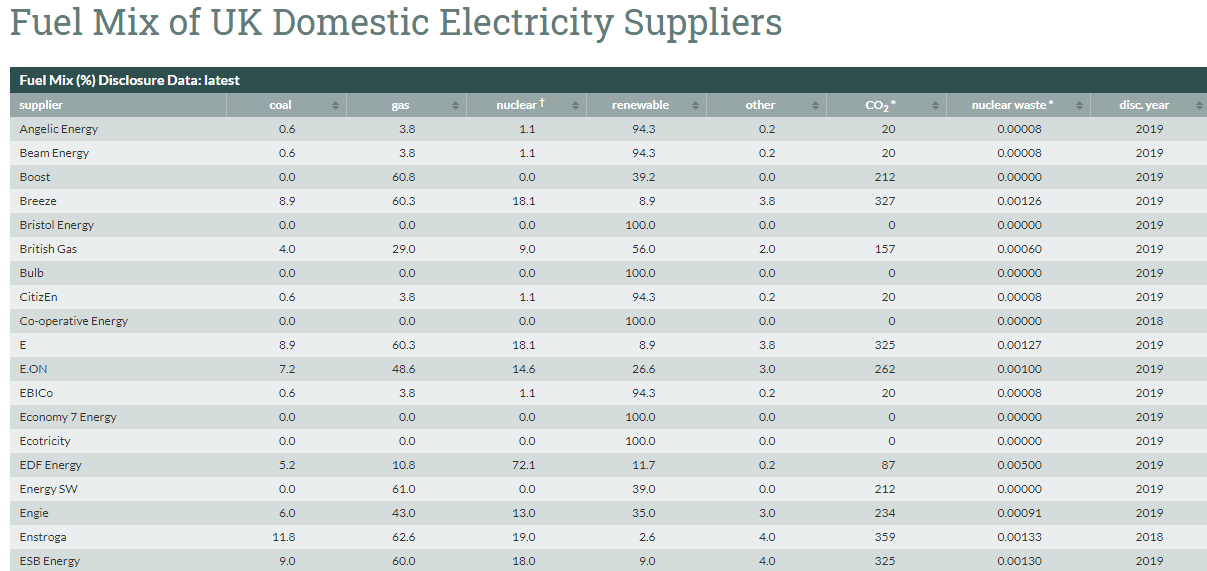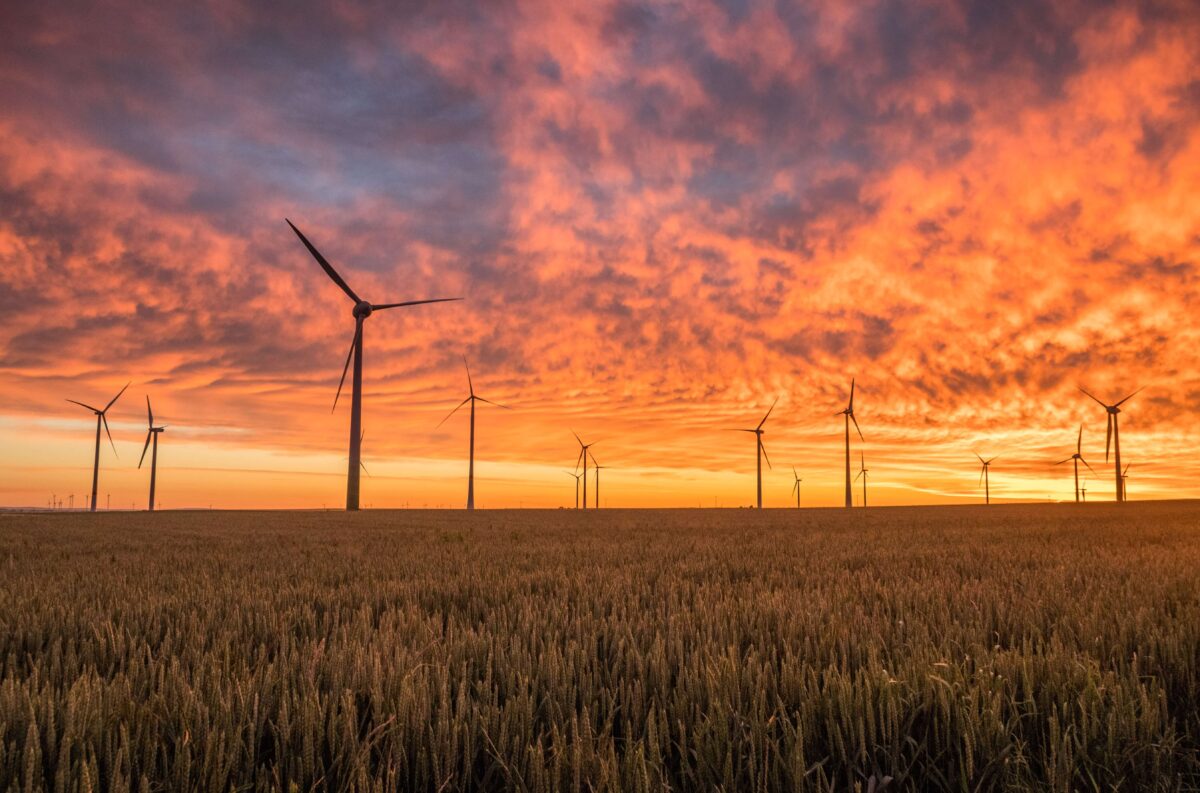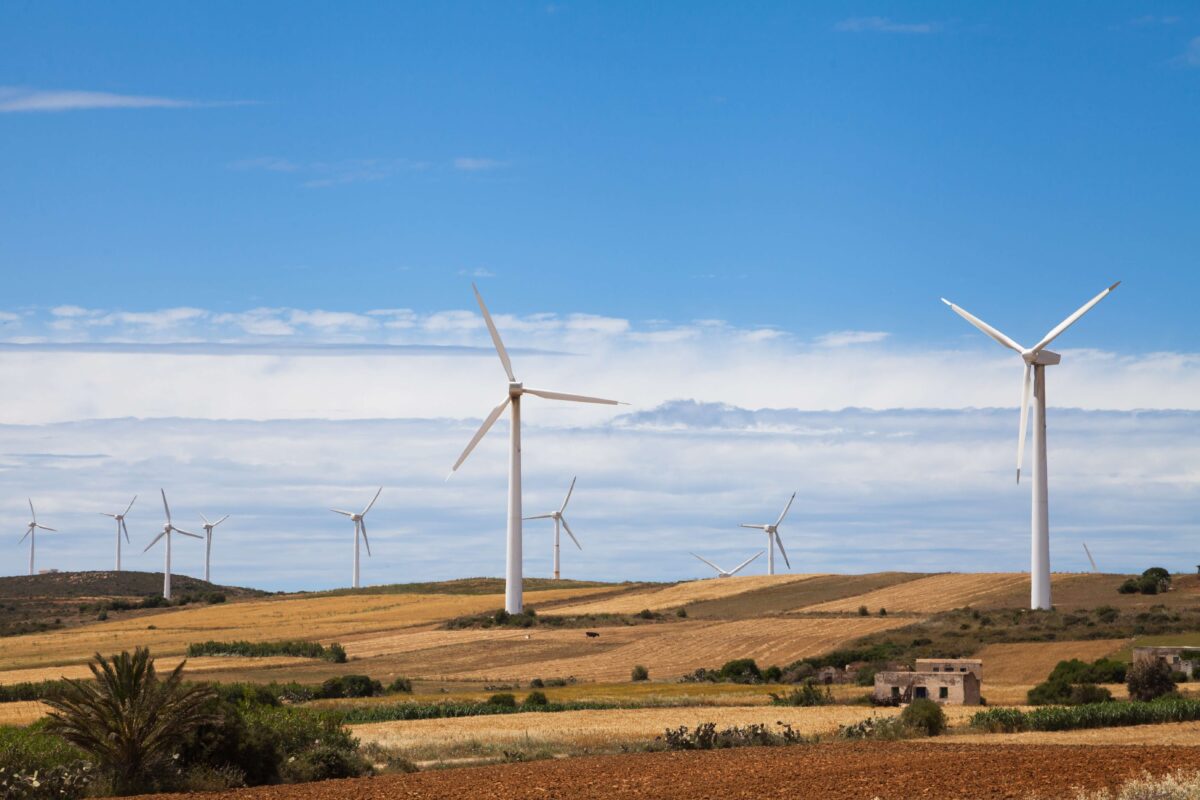Feb 2020: Oxford updates; Ofgem’s decisions; effect of climate change on energy; and data!
Updates from the University of Oxford
Come join us!
 We are currently advertising for a researcher to join the Programme on Integrating Renewable Energy, who will examine legal and regulatory issues associated with renewable energy systems.
We are currently advertising for a researcher to join the Programme on Integrating Renewable Energy, who will examine legal and regulatory issues associated with renewable energy systems.
Such issues range from legislative challenges posed by emerging needs for data to be available to market participants (while maintaining system security and privacy), to the development of new business models, and contractual arrangements that have unexplored complexities. The successful applicant will analyse such issues while working towards making policy recommendations alongside others in Oxford University.
This is a full-time post for 12 months. The deadline for applications is 13 March 2020, 12:00. Click here for more info!
How Can We Move To Zero Carbon Smart Electricity Systems?
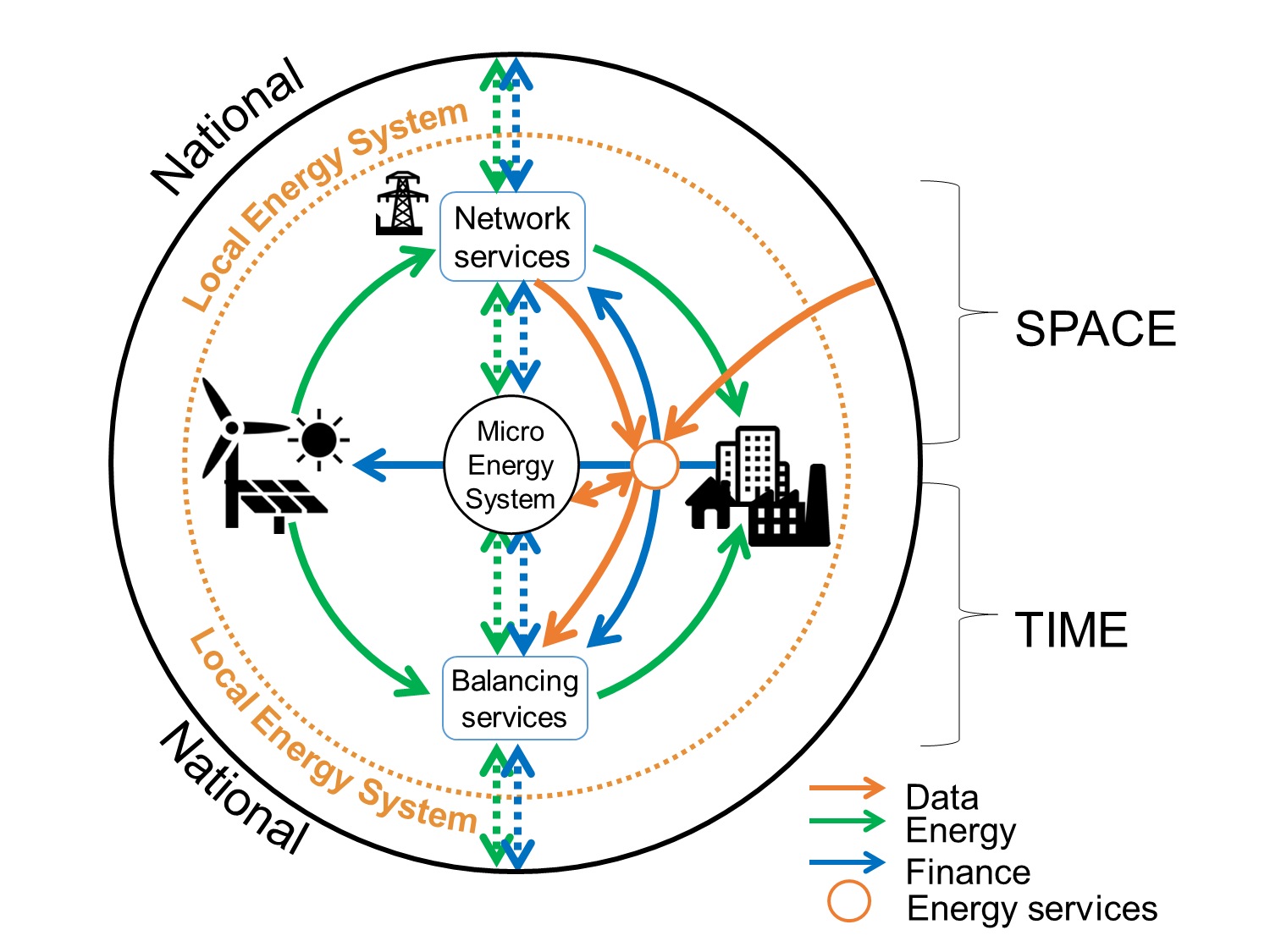 You can find out by watching this short video in which Prof Malcolm McCulloch introduces how the UK power system works, as well as summarising our move away from harmful fossil fuel sources of electricity, towards a zero carbon, smart electricity system.
You can find out by watching this short video in which Prof Malcolm McCulloch introduces how the UK power system works, as well as summarising our move away from harmful fossil fuel sources of electricity, towards a zero carbon, smart electricity system.
Malcolm explains the history of large centrally located power stations directly linked to the national grid, which only deliver power in one direction. By moving away from these systems towards more numerous, smaller renewable energy generating sources, we have opportunities to both generate and use electricity locally, which has many advantages.
We are also time shifting the balance of generation to demand, due to the variability off renewable power sources. With computing advances, we can collect data on local generation and demand and use this information to better understand diverse patterns of electricity demand, and therefore maximise the use of locally generated renewable electricity.
Another change would be that the local and the national energy network would provide network and balancing services to each other, and have data flowing between them: a bi-directional system.
How to develop such systems in practice are some of the ideas being explored with partners in the project LEO: Local Energy Oxfordshire.
You can hear more from Malcolm by watching the video of the lecture he gave at the Oxford Martin School on 13 Feb 2020 on “Powering the future: switching on the renewables”.
Power to the people!
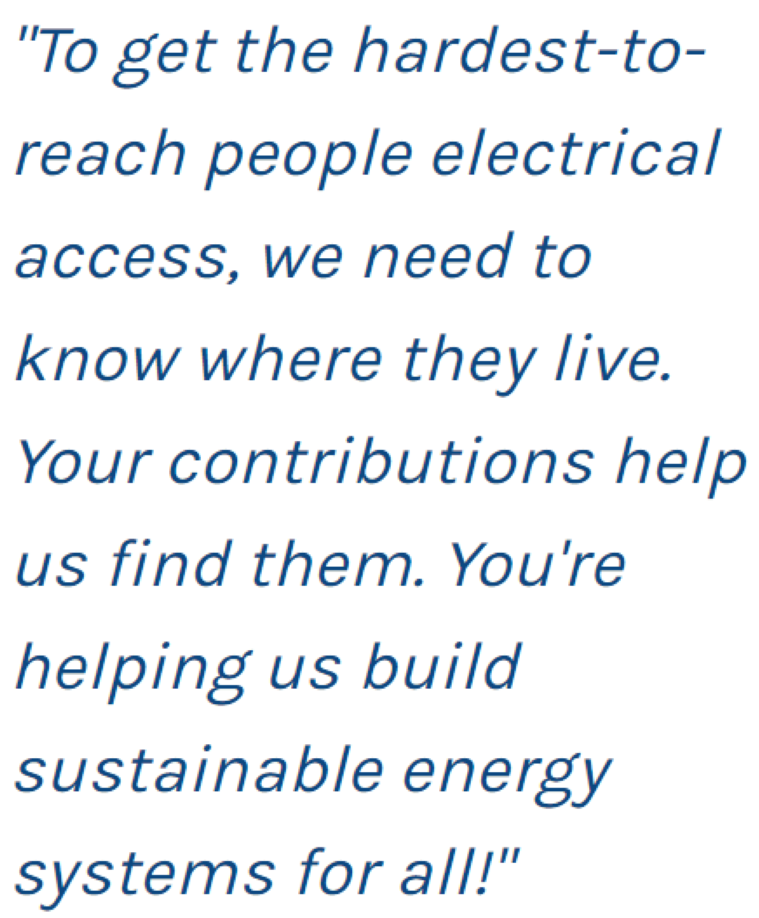 Do you have a spare 10 minutes? Why not become a Citizen Scientist, helping us move closer to the aim of universal access to electricity?
Do you have a spare 10 minutes? Why not become a Citizen Scientist, helping us move closer to the aim of universal access to electricity?
Reflecting that close to 1 billion people live without electricity worldwide, Sustainable Development Goal 7 calls for universal access to reliable and sustainable electricity by 2030. Electricity improves and saves lives by enabling healthcare, providing lighting, reducing use of wood or kerosene for heating and cooking and thousands of other uses that can help improve economic prospects and alleviate poverty.
Most people without access to electricity live in rural sub-Saharan Africa or South Asia. Rural settlements often cannot be connected to national grid services due to cost and technological challenges, but renewable off-grid solutions are now becoming increasingly affordable.
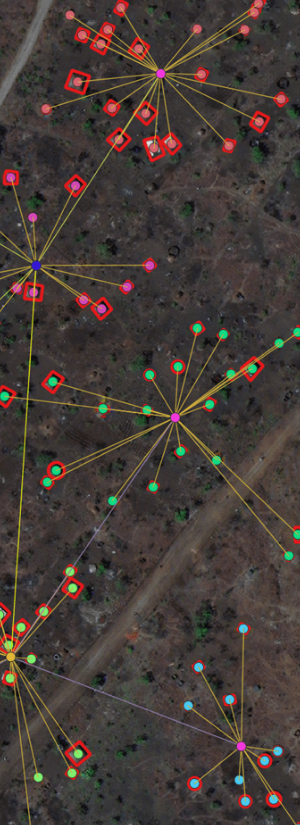 To properly design a sustainable and community-appropriate rural electrical system, the size, location and power potential of the community must be determined but gathering this information using conventional survey methods is slow and expensive.
To properly design a sustainable and community-appropriate rural electrical system, the size, location and power potential of the community must be determined but gathering this information using conventional survey methods is slow and expensive.
Power to the People is a citizen science project that aims to tackle this problem, and accelerate the design process by capturing data from satellite imagery, and an object detection computer algorithm, suited to rural housing styles present in sub-Saharan Africa. Using the Zooniverse platform, volunteer Citizen Scientists can look at satellite images to find rural houses in Kenya, Sierra Leone and/or Uganda, and answer some basic questions about what they can see. With many eyes looking at images and generating results, a training dataset will be created on which to train the computer algorithm. The algorithm will then be able to analyse many satellite images very quickly, thus helping to speed up the capture of data needed to roll out sustainable access and meet the 2030 target.
Alycia Leonard is the key contact for this project, which is a collaborative effort between researchers in the University of Oxford’s Energy and Power Group, including Prof Malcolm McCullough and Dr Scot Wheeler, the Satellite Applications Catapult, Earth-I, and Zooniverse. The project complements past and ongoing work undertaken at the University of Oxford in rural Africa electrification in the RISE and RELCON projects.
Improving Sierra Leone’s power system
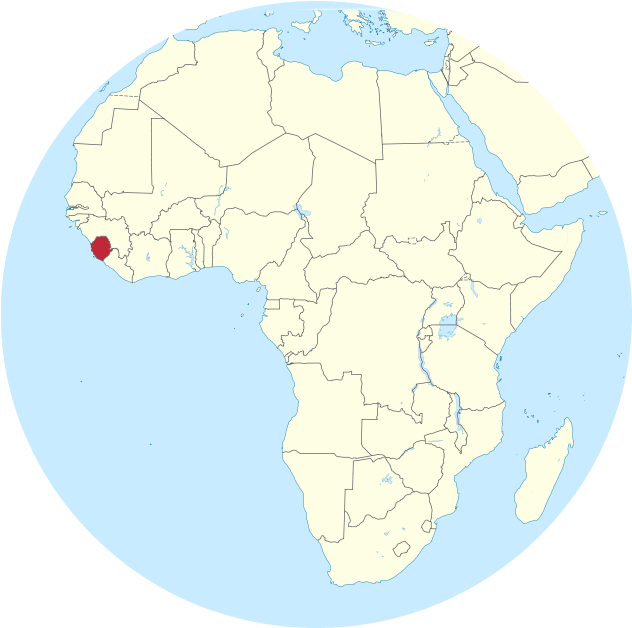 Members of the Programme of Integrating Renewable Energy, including Stephanie Hirmer, and John Rhys, are starting a new project, focussed on Sierra Leone. They will be evaluating the country’s infrastructure and identifying opportunities to improve the power system, with funding by DFID’s Applied Research Programme on Energy and Economic Growth.
Members of the Programme of Integrating Renewable Energy, including Stephanie Hirmer, and John Rhys, are starting a new project, focussed on Sierra Leone. They will be evaluating the country’s infrastructure and identifying opportunities to improve the power system, with funding by DFID’s Applied Research Programme on Energy and Economic Growth.
Power systems are notoriously difficult to research and adapt. They bring together technical, economic, social, and institutional challenges. Energy is a product that is politically sensitive (requiring low tariffs) but needing substantial investment (requiring high tariffs) to expand. While renewable energy technology, such as solar PV, is rapidly becoming cheaper, it is variable and so requires new balancing mechanisms.
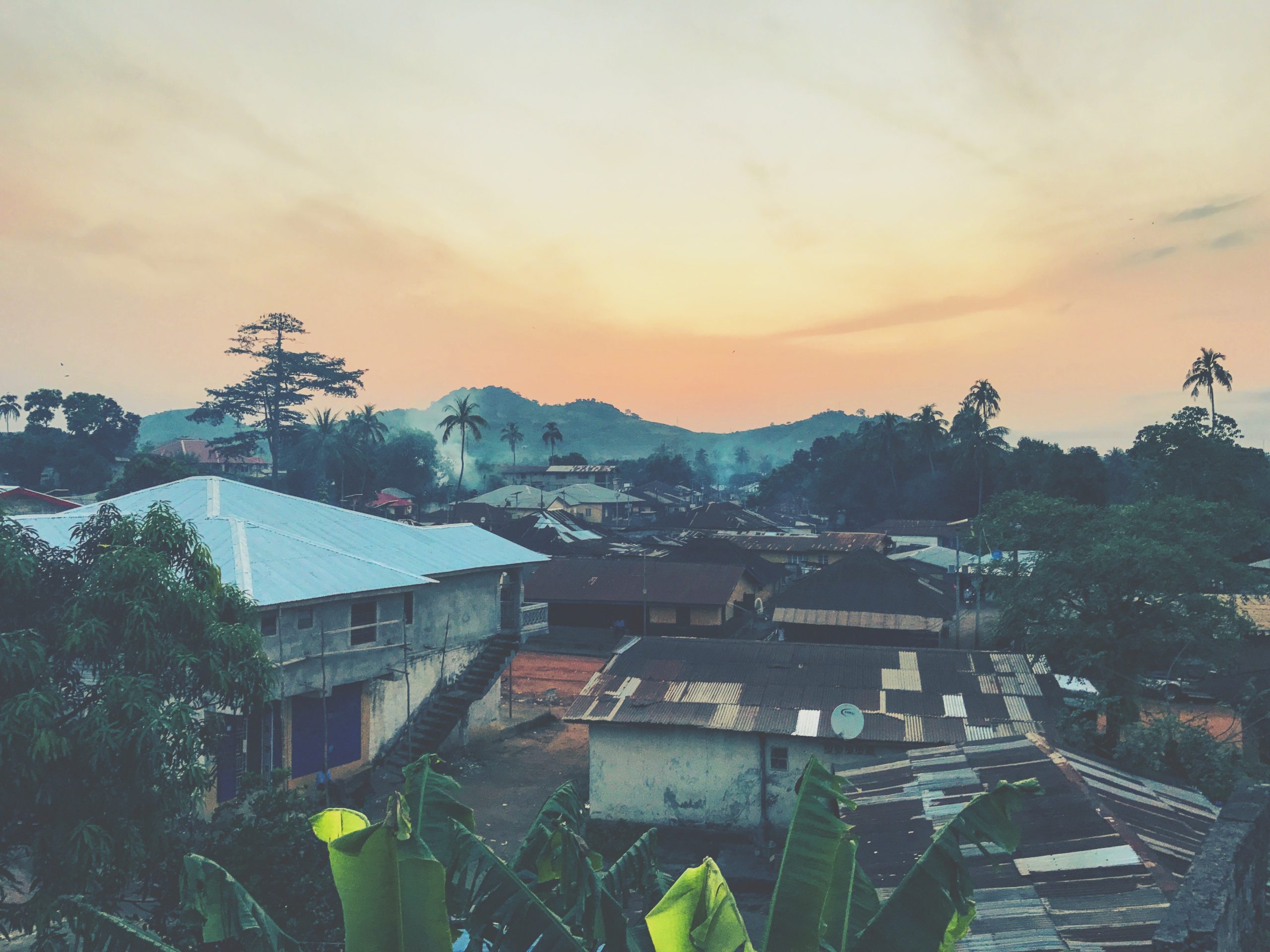 Understanding and addressing energy system issues therefore requires a whole systems approach, reflecting the dependencies and co-evolution of energy infrastructure and institutions, economic activity, technology, and society.
Understanding and addressing energy system issues therefore requires a whole systems approach, reflecting the dependencies and co-evolution of energy infrastructure and institutions, economic activity, technology, and society.
This multidisciplinary research project has three workstreams:
(1) Explore opportunities for increasing efficiency and reliability in relation to existing infrastructure, focusing mainly on Freetown;
(2) Evaluate mechanisms to increase access to electricity in rural settings; and
(3) Understand how increased access to electricity can deliver business growth or new business opportunities both nationally and within rural settings.
A key element is to ensure the research remains relevant and implementable, and so the project will be governed by a strategic advisory board, comprising people working in the Sierra Leone power sector and chaired by DFID.
 Could your idea tip the climate change balance?
Could your idea tip the climate change balance?
The world is not moving fast enough to minimise global warming. In 2019 emissions were 4% higher than when the Paris Agreement was signed in 2015; and COP25 was not a success. National targets are being missed, and too few companies are seriously planning for decarbonisation. It can feel like no individual action can make a difference.
But what if a small change could trigger outsized impacts?
Last year, Cameron Hepburn and his team at the University of Oxford suggested designing climate sensitive interventions that take advantage of socio-economic and political tipping points. This is because when a system is at a tipping point, a relatively small change can trigger a profound impact – such as a loud noise setting off an avalanche.
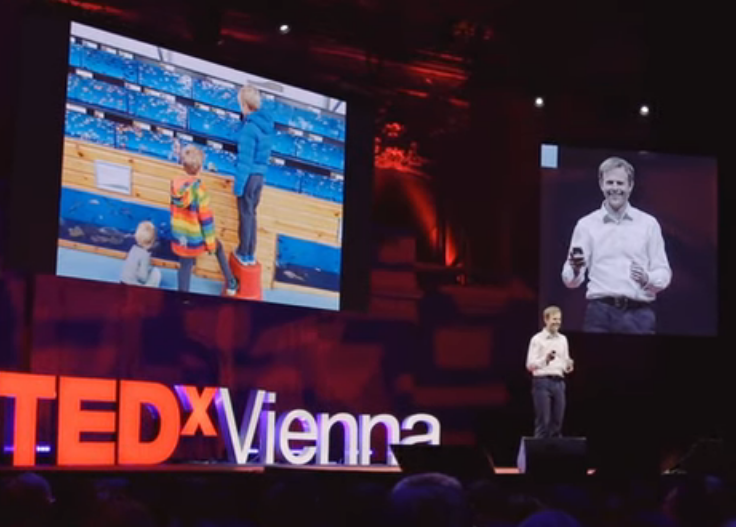 Now the Oxford team are reaching out to everyone, because climate change needs inputs from all sectors, and everyone’s skills, perspectives and ideas on how to tackle the challenge are important.
Now the Oxford team are reaching out to everyone, because climate change needs inputs from all sectors, and everyone’s skills, perspectives and ideas on how to tackle the challenge are important.
What do you think is a tipping point solution to climate change? What might the spark be that changes things quickly and for the better? What do you think are the relatively small actions that can be taken in any aspect of our lives that have the potential to generate a large reduction in global emissions?
Find out more and submit your tipping point solution for a chance to win €1000 and to explore your idea to a team at the University of Oxford! Don’t delay; the deadline is 1 March 2020!
Watch Cameron Hepburn’s TEDx Talk on sensitive intervention points to find out more about the concept.
Ofgem’s been busy…
…being criticised
![]() has been fiercely criticised by power companies and the Confederation of British Industry (CBI) for not aligning with the climate emergency and relying on outdated policy mandates which hinder investment in renewable energy.
has been fiercely criticised by power companies and the Confederation of British Industry (CBI) for not aligning with the climate emergency and relying on outdated policy mandates which hinder investment in renewable energy.
Ofgem’s principal objective is to protect the interests of existing and future consumers in relation to gas conveyed through pipes and electricity conveyed by distribution or transmission systems. It must have regard to consumer interests taken as a whole, including the reduction of greenhouse gases.
![]() However, the CBI said that Ofgem had sent “negative signals” to investors by failing to prioritise the government’s climate agenda, and that it should be given new statutory duties to prioritise clean growth and progress towards net zero, alongside fair competition and value for money. Energy practitioners consider that policy and regulation are the biggest barriers to achieving a clean energy roll-out.
However, the CBI said that Ofgem had sent “negative signals” to investors by failing to prioritise the government’s climate agenda, and that it should be given new statutory duties to prioritise clean growth and progress towards net zero, alongside fair competition and value for money. Energy practitioners consider that policy and regulation are the biggest barriers to achieving a clean energy roll-out.
…setting out its Decarbonisation Plan
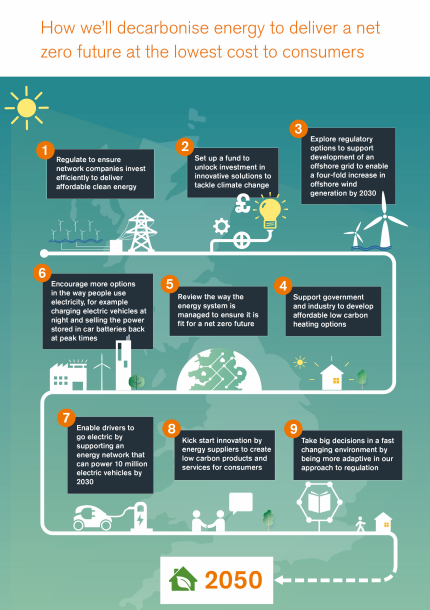 By way of response, on 3 Feb 2020, Ofgem launched its climate manifesto stating that it will change how it governs the industry to help meet the government’s climate targets.
By way of response, on 3 Feb 2020, Ofgem launched its climate manifesto stating that it will change how it governs the industry to help meet the government’s climate targets.
Ofgem’s Decarbonisation Action Plan sets out the steps it will take in the next 18 months, “on an urgent, but decades-long journey towards net zero”.
It says it will work closely with government, industry and consumers to help get 10m electric vehicles mobilised by 2030 and support a fourfold increase in offshore wind generation, while protecting homes from rising energy bills. It will support low-carbon home heating, tariffs that encourage homes to help balance the energy system, and crackdown “greenwash” energy deals. It will establish a Net Zero Advisory Group to ensure it keeps in step with policy and other developments.
Whatever the path to net zero, success depends on engaged consumers making behavioural changes, so they can be flexible and shift energy demand where and if needed. Ofgem expects retailers to drive this behaviour change: “Retailers will be critical to fostering this behaviour change in homes and businesses – by developing and marketing products and services that encourage and make it easy for consumers to use energy efficiently and at different times”.
But can energy consumers react as needed? Will there be widespread behaviour change, and the adoption of new technologies, which is very necessary but very expensive to ordinary people? Time will tell, but time is not on our side.
It is good that Ofgem’s decarbonisation plan has been welcomed by the industry and the National Infrastructure Commission, as regulators have a pivotal role in achieving net zero. However, immediate action on the ground is critically needed, and the real test.
Greenwashing
With its reference to greenwashing, Ofgem has noted concerns that numerous suppliers claim to provide ‘green’ electricity, even 100% of the supply.
In some instances, this could be misleading or even fraudulent. While some companies genuinely provide green renewable energy, others use loopholes to claim that they are. The loophole comes via the purchase of certificates attached to renewable energy generation, rather than purchasing the actual energy itself.
The critical thing we need to do is support new, additional renewable energy generation. This will only happen when electricity is bought from generators who are actively operating renewable energy sources. If someone buys electricity from a supplier that has only bought certificates, then no new renewable generation will be supported.
Thankfully, you can check the actual proportion of renewable energy of different suppliers, as each must report its fuel mix annually:
…making a decision on the Targeted Charging Review
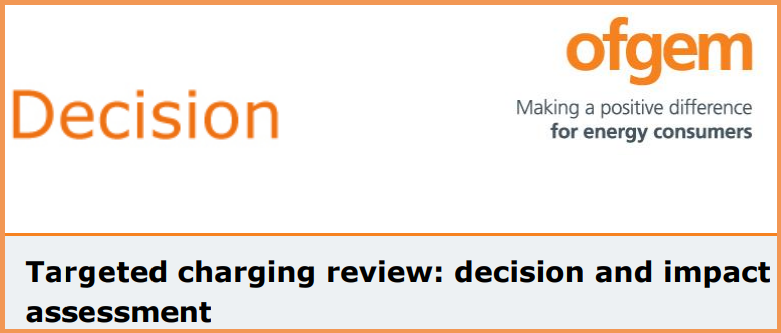 How Ofgem proposes to balance its new net zero ambition against the new barriers introduced from its Targeted Charging Review (TCR) remains to be seen.
How Ofgem proposes to balance its new net zero ambition against the new barriers introduced from its Targeted Charging Review (TCR) remains to be seen.
The TCR examined how to recover the fixed costs of providing existing pylons and cables, and the differences in charges faced by smaller distributed generators and larger generators. When announcing its decision in November 2019, Ofgem claimed that the costs of maintaining the electricity grid will now be spread “more fairly”.
However, the outcome has been slammed by the industry, which says that it will have a major impact on prices. It has been called a punishment to those who have actively avoiding peak demand costs to help balance the grid, and who have used demand side solutions.
It will very likely curb the potential growth of storage and demand side flexibility, and smaller distributed generators will lose out. Many new onshore wind and solar power new projects may be abandoned due to the added costs. Businesses that generate electricity onsite will also be negatively affected.
![]() The Renewable Energy Association (REA) have commented that the outcome undermines the deployment of renewables and the development of a more flexible electricity system.
The Renewable Energy Association (REA) have commented that the outcome undermines the deployment of renewables and the development of a more flexible electricity system.  The Solar Trade Association commented that even though Ofgem’s own analysis showed that these changes risk delaying deployment of subsidy-free low cost renewables, it is pressing ahead with changes that make net zero harder to reach, not easier.
The Solar Trade Association commented that even though Ofgem’s own analysis showed that these changes risk delaying deployment of subsidy-free low cost renewables, it is pressing ahead with changes that make net zero harder to reach, not easier.
The outcome has been identified as an example of where Ofgem has prioritised the effect on bills over decarbonisation. And yet, while the majority of household customers will face a reduction in bills following Ofgem’s decision, those using the least amount of electricity, such as those in fuel poverty, will face an increase in bills. This is because the new system will implement a fixed charge for every household and business.
In addition, consumers who have taken action to curb usage, by taking up energy efficiency measures or by investing in self-generation, will face higher bills, while users with the highest consumption will see a reduction in costs. It will also remove the incentive to use self-generate power, or be more efficient: under the current system, residual charges are paid per kilowatt-hour used, meaning that consumers inevitably save when reducing usage.
Another TCR change is to ensure that large industrial and commercial firms are prevented from avoiding large network residual costs as they currently do through avoiding peak periods (Triads). Businesses that have avoided peak periods with storage and demand side flexibility will no longer be able to save costs this way.
Effects of Climate Change…
…on record wind generation
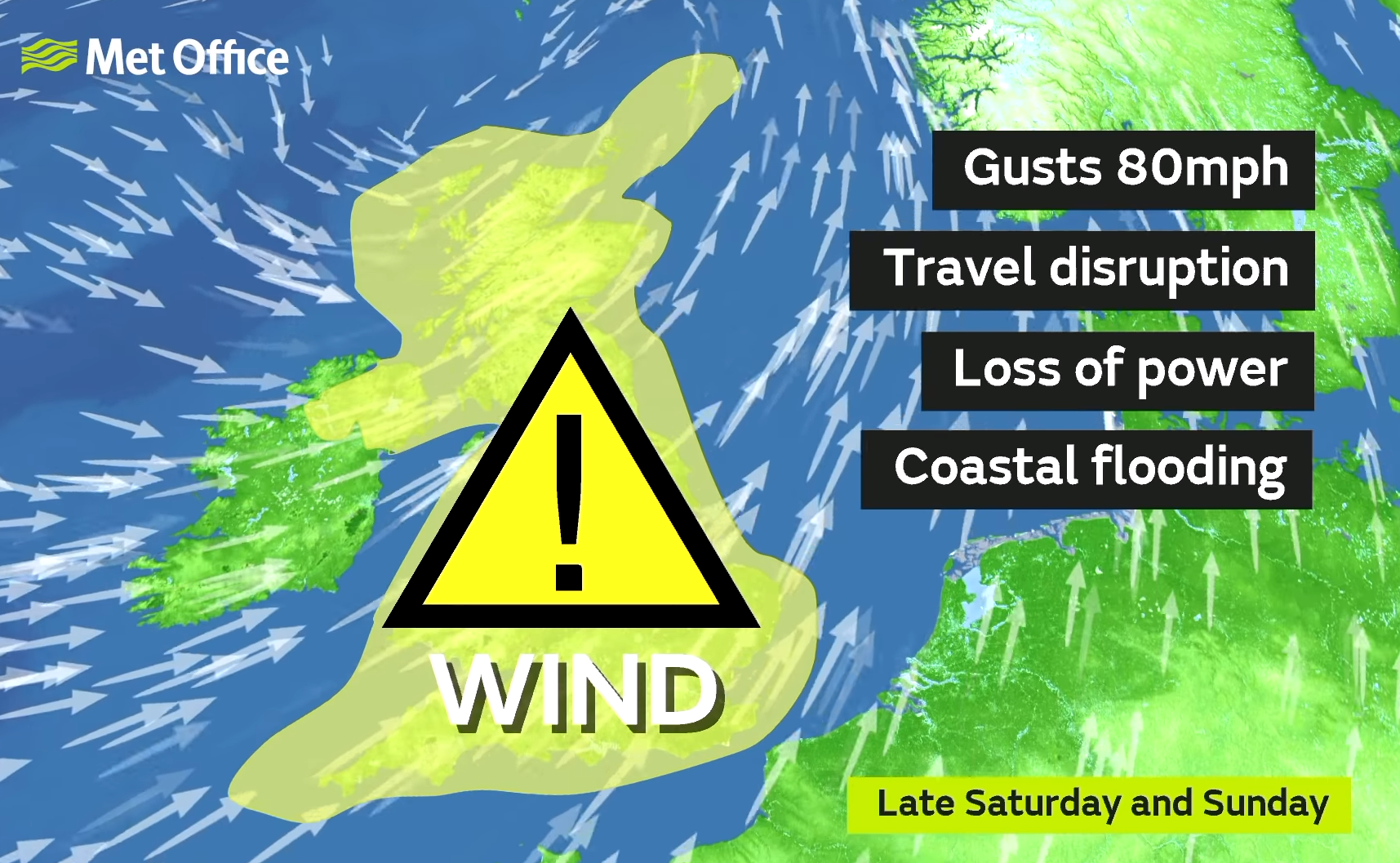 Storm Ciara, which passed over the UK in early February, left its mark in a number of ways.
Storm Ciara, which passed over the UK in early February, left its mark in a number of ways.
Gusts of up to 97mph meant that the production of energy from wind peaked at 56% of electricity on Saturday 8 Feb, with the Saturday average being over 44% of electrical power produced, breaking new records and dwarfing all other forms of generation. This may be the singular positive aspect of the extreme weather event.
The storm also caused damage to network infrastructure however, such that ~760,000 people lost power. Many other negative impacts occurred with rain causing significant flooding across the north of England and elsewhere, causing misery to many people who had been flooded not so many years before. Many others were cut off from potable water supplies.
The effects of this event, Storm Dennis, and many others raise questions about UK infrastructure and its ability to cope with a changing climate. The Committee on Climate Change (CCC) and the Environment Agency have warned of the risks of failing to prepare for extreme weather events, which are becoming increasingly common. They state that the Government’s National Adaptation Programme is inadequate, suffers a lack of funding and prioritisation, and more must be done urgently to prepare for climate change, as well as tackling its fossil-fuelled causes. In the CCC’s assessment of preparedness for climate change, it found that England is still not prepared for even a 2°C rise in global average temperature, let alone more extreme levels of warming.
…on drought and energy production
One aspect of future climate change is the impact of drought on power production. Hydropower plants generate less during drought: as evidenced in northeast Scotland where low water levels in the River Spey in summer 2018 resulted a 25% drop in hydropower generation (and caused Speyside whisky companies to extend their summer shutdown period!).
Droughts also affect thermal power plants as these often use river waters for cooling purposes and can be sensitive to droughts and low flows. Water quality is also a concern, due to algal blooms and sediment loads that might clog filters. Paul Whitehead and Giamba Bussi, MaRIUS project researchers at Oxford investigating the risk and impacts of drought in the UK, worked with EnergyUK to determine the potenial effects of drought on thermal power plant operation in the River Trent.
They coupled a water quality model with climate model outputs to generate flow and water quality time series for future drought scenarios. This is the first study to assess drought impacts from a power generation perspective, using a very large stochastic set of droughts and employing a risk-based framework.
 The findings showed that droughts are likely to become longer and more frequent. As a result, low river flows are likely to disrupt the operation of thermal power stations, increasing the frequency of potential shut down. Water quality (nitrate and phosphorus) will deteriorate in summer, when the water stress on power plants is at its highest point. The deterioration could potentially trigger large algal blooms, whose consequences on power plant filters could present operational challenges. These effects can have potentially widespread consequences, given that electricity is essential to many other sectors and processes.
The findings showed that droughts are likely to become longer and more frequent. As a result, low river flows are likely to disrupt the operation of thermal power stations, increasing the frequency of potential shut down. Water quality (nitrate and phosphorus) will deteriorate in summer, when the water stress on power plants is at its highest point. The deterioration could potentially trigger large algal blooms, whose consequences on power plant filters could present operational challenges. These effects can have potentially widespread consequences, given that electricity is essential to many other sectors and processes.
In addition, other work in the MaRIUS project, by Ed Byers and Jim Hall has focused on carbon capture and storage. Their work shows that this technology requires considerable amount of water. Low carbon pathways with high levels of carbon capture and storage therefore will result in significantly elevated and concentrated water demands in a few key river basins.
Data! Data! Data! he cried impatiently, “I can’t make bricks without clay.”
Lamented Sherlock Holmes. Indeed, reliable, robust, and validated data are also critical for informed planning, policy development, and investment in the clean energy sector.
Thanks to geospatial data and analyses, there are now many open energy datasets and apps availability. These can help people understand energy potential around the world, and support investigations, planning, decisions and policy making.
Here are just a few examples.
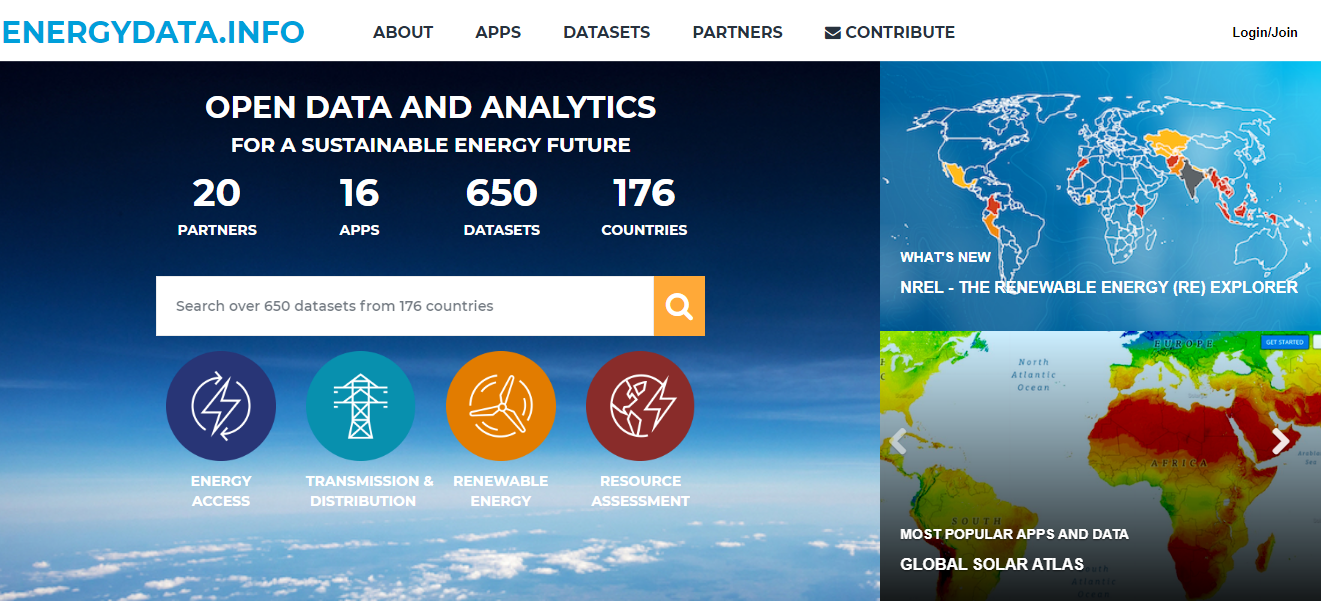 Energydata.info is an open (free) data platform providing access to huge numbers of datasets relevant to the energy sector. It has been developed by the World Bank Group and multiple partners as a public good. Everyone is encouraged to share and use data and analytics to help achieve UN Sustainable Development Goal 7, ensuring access to affordable, reliable, sustainable and modern energy for all.
Energydata.info is an open (free) data platform providing access to huge numbers of datasets relevant to the energy sector. It has been developed by the World Bank Group and multiple partners as a public good. Everyone is encouraged to share and use data and analytics to help achieve UN Sustainable Development Goal 7, ensuring access to affordable, reliable, sustainable and modern energy for all.
 From this website, you can find all sorts of useful information, including:
From this website, you can find all sorts of useful information, including:
- Actual fuel mix of different suppliers (a great tool to check out potential greenwashing!)
- Latest news on energy infrastructure and developments
- Current carbon intensity of the national grid
- Carbon intensity of the national grid, and different UK regions
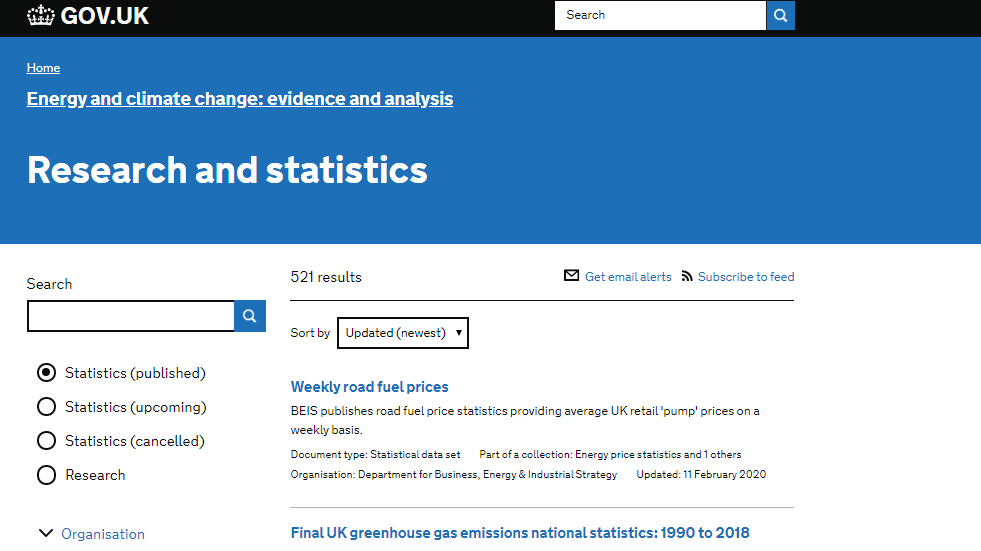 The UK Government releases datasets and statistics on a huge range of topics including energy and climate change. Many datasets are accompanied by some analysis and commentary on features and trends. Some favourites of mine are:
The UK Government releases datasets and statistics on a huge range of topics including energy and climate change. Many datasets are accompanied by some analysis and commentary on features and trends. Some favourites of mine are:
- Public Attitudes Tracker: a survey run four times year, consistently asking questions on renewable energy, climate change and associated topics:
- Energy Trends: UK Electricity: a quarterly review of the total demand for electricity, total generation, and the generation source of the electricity.
- Digest of UK Energy Statistics (DUKES): a detailed report produced annually since 1948 (over 70 years!) with data and analysis on overall energy production and consumption, as well as specific fuels and renewables.
- Feed-In Tariff Statistics: monthly data on solar PV deployment, commissioned installation and registrations
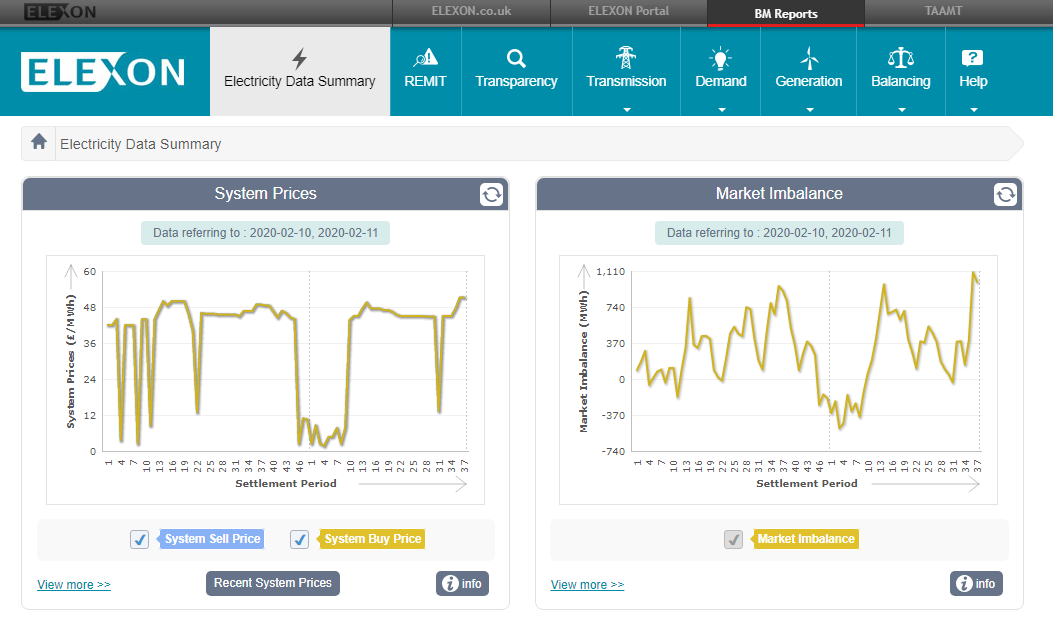 ELEXON is the company that compares how much electricity generators and suppliers say they will produce or consume with the actual amount, and transfers funds.
ELEXON is the company that compares how much electricity generators and suppliers say they will produce or consume with the actual amount, and transfers funds.
Its Balancing Mechanism Reporting Service provides a wealth of electricity operational data for current historic periods all of which can be downloaded. The information includes forecast data for different future time periods, covering generation and demand, plus wind predictions, system prices, interconnectors and more.

